Mega Backdoor Roth explained

Many individuals may have heard of a back-door Roth IRA contribution, but most are probably not aware of what a Mega Backdoor Roth is.
A Roth IRA and a Roth election within a 401k are two separate things. The Roth IRA contribution limit in 2020 is $6,000 (and $7,000 if you’re over 50). A Roth 401k is subject to the annual 401k limits, currently $19,500 for 2020 ($26,000 if you’re over 50).
Backdoor Roth (Personal IRA)
The annual income limit to contribute to a Roth IRA in 2020 is $206,000 for married couples and $139,000 for single filers. For those that still want to contribute to a Roth above these limits, there is a method called the Backdoor Roth. This involves making an after-tax contribution to a traditional IRA account, then converting some or all of the money in the account to a Roth IRA. This transaction is tax free because no tax deduction was taken at the contribution into the IRA and no earnings were made prior to the conversion to the Roth. You can contribute the maximum to the IRA for you and your spouse, then convert both contributions immediately into each person’s Roth.
It is important to remember that if you have an IRA that is already funded then you would have to convert those funds first, which will be taxed at your normal income rate, thus we advise that you consult with a financial advisor or a tax professional prior to converting an IRA with rollover funds or prior contributions.
Mega Backdoor Roth (401k)
A mega backdoor Roth requires two conditions from your employer. Your 401k must allow you to make after-tax contributions and your employer must allow in-service withdrawals.
Plain and simple, a mega backdoor Roth is a technique that allows employees to contribute larger after-tax amounts to a 401k and then convert those amounts to the Roth 401k. This process allows the employee to contribute up to an extra $37,500 for 2020 to a Roth in their employer’s 401k, if the 401k allows for after-tax contributions over and above the employee contribution limits. Contribution limits are $19,500 for 2020 and $26,000 for those who are 50 or over.
If your plan allows after-tax contributions, these contributions would be over and above the employee deferral limits. For 2020, the total amount of combined employee and employer contributions allowed is $57,000 and $63,500 for those 50 and over. That means you can contribute $19,500 pre-tax and your employer typically contributes something. Some 401k plans then allow employees to contribute the remaining amount in after-tax contributions. This means that the maximum amount of after-tax contributions is $37,500 for 2020. If your plan offers an employer match, your maximum after-tax contribution would be reduced by the amount of the match.
For example, let’s say your employer matches $5,000 into your 401k. You can contribute $19,500 pre-tax, your employer puts in $5,000 and that leaves you $32,500 that you can potentially contribute after-tax, if your employer allows it.
Sadly, a company that allows both after-tax contributions and in-service distributions is rare. Check with your plan administrator before you proceed.
The mega backdoor Roth IRA is another tool to maximize tax savings IF you have more to save. This strategy is for people who are already maximizing their 401k, IRA, HSAs and 529s.
It also works very well for people who are looking to make early withdrawals from their IRA or 401k.
Posted February 18, 2020
Share This Story, Choose Your Platform!
Wiser Wealth Management, Inc (“Wiser Wealth”) is a registered investment adviser with the U.S. Securities and Exchange Commission (SEC). As a registered investment adviser, Wiser Wealth and its employees are subject to various rules, filings, and requirements. You can visit the SEC’s website here to obtain further information on our firm or investment adviser’s registration.
Wiser Wealth’s website provides general information regarding our business along with access to additional investment related information, various financial calculators, and external / third party links. Material presented on this website is believed to be from reliable sources and is meant for informational purposes only. Wiser Wealth does not endorse or accept responsibility for the content of any third-party website and is not affiliated with any third-party website or social media page. Wiser Wealth does not expressly or implicitly adopt or endorse any of the expressions, opinions or content posted by third party websites or on social media pages. While Wiser Wealth uses reasonable efforts to obtain information from sources it believes to be reliable, we make no representation that the information or opinions contained in our publications are accurate, reliable, or complete.
To the extent that you utilize any financial calculators or links in our website, you acknowledge and understand that the information provided to you should not be construed as personal investment advice from Wiser Wealth or any of its investment professionals. Advice provided by Wiser Wealth is given only within the context of our contractual agreement with the client. Wiser Wealth does not offer legal, accounting or tax advice. Consult your own attorney, accountant, and other professionals for these services.





